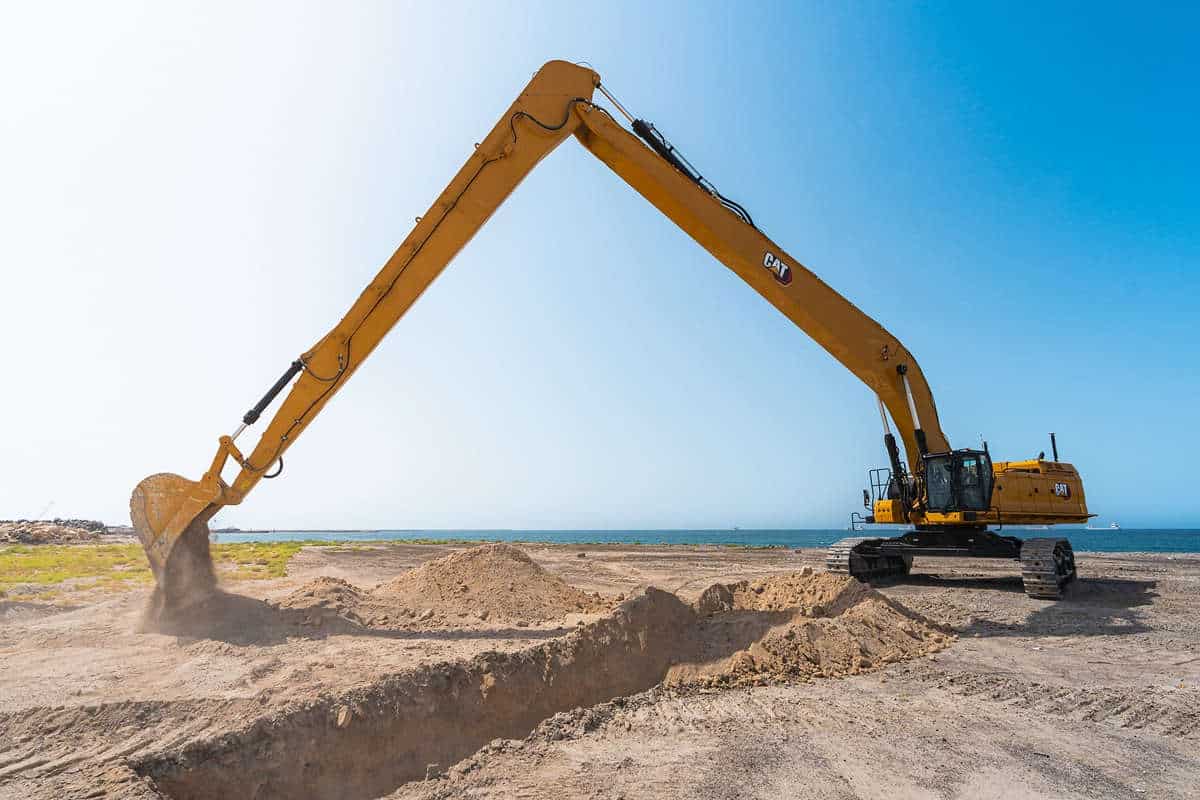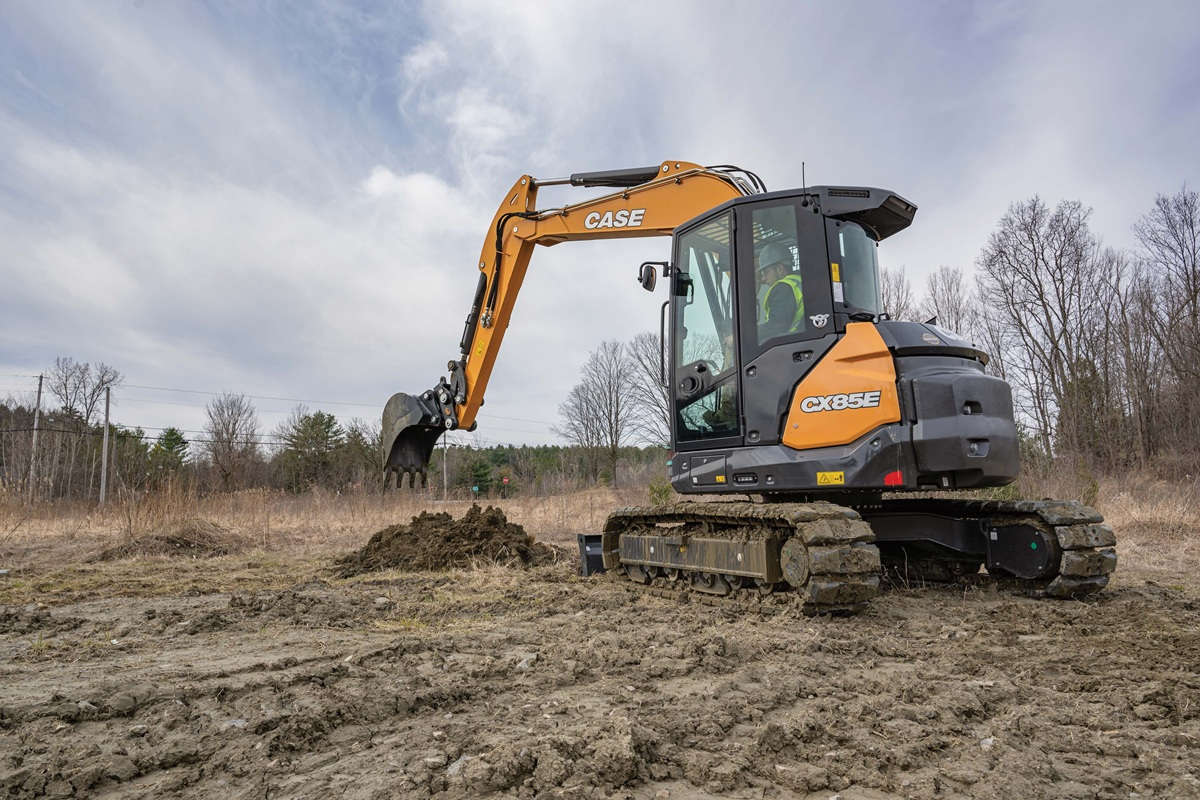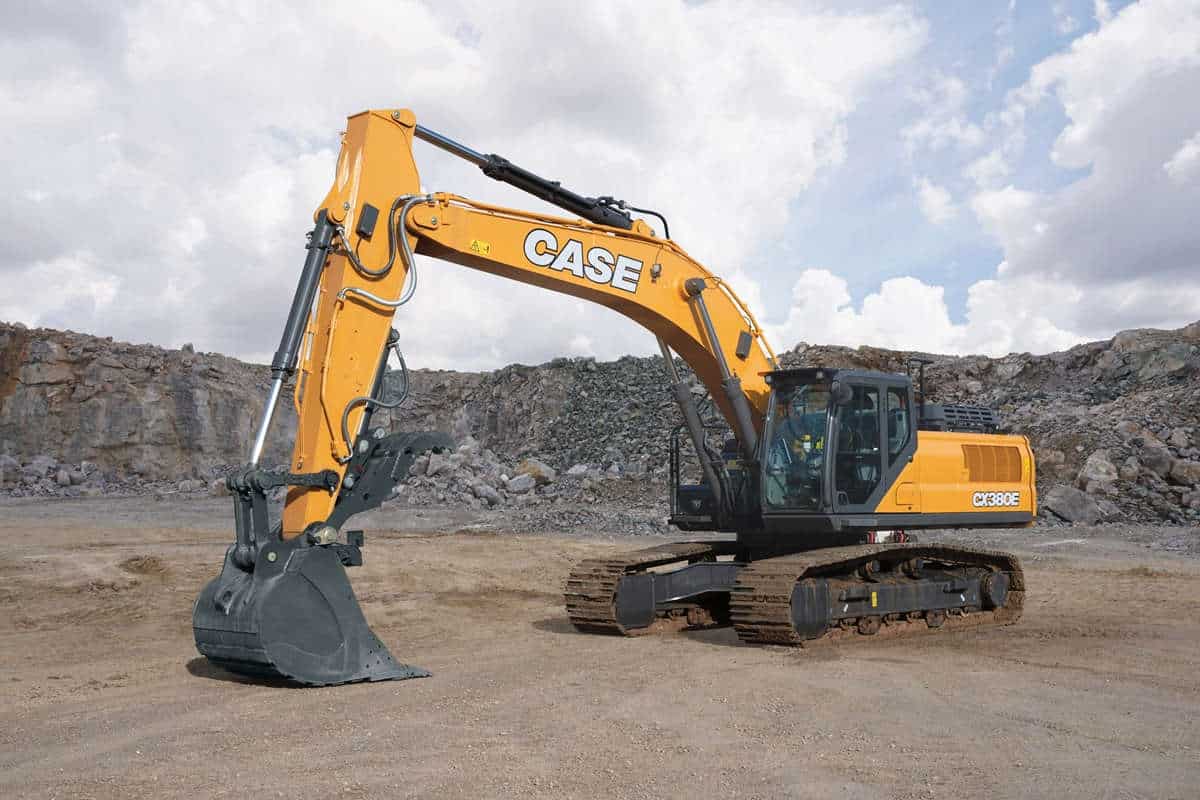From Compact to Full-Size, Excavator Manufacturers Offer Options for Utility Contractors
Utility contractors dig for a living, so having the right mix of digging tools in the equipment yard is a central quest of each contractor. Excavator manufacturers offer an array of model options for contractors. It becomes a matter of each contractor knowing what he is looking for in a machine.
If a contractor’s work is at the end of the line, where sewer or electrical lines are connected to a building, a compact excavator may be the answer. If larger pipe or lines are being laid, along a street, for example, a mid- or full-sized excavator most efficiently accomplishes the task.
“It can depend on the amount of material to be moved, type of job, specialty attachment needs and environmental demands, including ground pressure and sound levels. Travel speeds may be an issue, or whether frozen ground is involved — these are all issues customers typically take into account when making a decision,” says Des Jarvis, product manager for excavators at Komatsu America Corp.
The range of excavator sizes available today is extensive. Komatsu alone offers 10 models of mini excavators weighing less than 20,000 lbs with horsepower ranging from 25 to 65. Another 15 Komatsu-branded excavators scale up from 93 to 196 hp, each of them under 70,000 lbs. Then there are the giant models — topping out at 670 hp and 254,000 lbs — but the majority of utility contractors don’t require machines that large.
Because utility functions vary, says Jordan Dey, compact product specialist for JCB North America, “the machine has to vary as well. The machines need to be spec’d precisely to meet the needs of each unique utility application. That’s also desirable for a utility contractor, rather than to have a one-size-fits-all philosophy.”

The 8018 from JCB weighs just 4,000 lbs and boasts the best lift, digging and tear-out performance in its class, according to the company.
The JCB 8035 and 48Z compact excavators are popular choices for utility contractors, Dey says, the first an 8,000-lb machine, the second coming in at 10,000 lbs. But JCB also offers a “contractor” model, the 8018, which weighs just 4,000 lbs and boasts the best lift, digging and tear-out performance in its class, according to the company. In addition, the 8018 specifically targets operating costs. Among other cost-saving features, it has graphite-impregnated bushings that require greasing only at 500-hour intervals.
The reviving housing market has contractors more interested in mini or compact excavators, according to Mark Wall, excavator product marketing manager for John Deere. He says a small excavator is the “perfect size of machine” for utility contractors connecting new construction to utilities. “Our zero tail swing 35G compact excavator is really capable of getting in there and doing that kind of work. If you have a three-quarter-ton pickup and a trailer, you can put the 35G on there, a couple of buckets and an attachment and go to work.”
While the tail on the larger (56-hp) Deere 85G swings wider, the machine’s independent swing boom can set a bucket close to a foundation or sidewalk. A preferred option with the 85G is rubber pads on tracks so the excavator can be offloaded onto a street or walkway without damaging pavement. “Most of our dealers and most contractors I talk with see high value in the rubber pads,” says Wall.
Urban environments — characterized by concrete, asphalt, trenching, heavy traffic and narrow passages among buildings — are the playgrounds for many utility contractors. While the Komatsu short tail swing design PC228USLC-10 has the capability of a standard excavator (158-hp, 54,000-lb), it is extremely useful in confined spaces.
“It has a very tight rear tail and front swing radii,” says Jarvis. “Tuck in the boom and it will swing within a 7-ft, 7-in. circle. A road lane is 14 ft, 9 in. wide, so you can swing while working and remain completely in one lane without blocking traffic. We have heard from many customers that this is a common application.”
“Choosing the right machine with the right technology is the key,” says Jason Anetsberger, senior product manager of intelligent Machine Controls at Komatsu America Corp. Komatsu’s intelligent PC210LCi-10 with automation aids operators in finish grading and minimizes over excavation — preventing over excavation or digging more material than necessary. Komatsu intelligent Machine Control performance testing has shown these machines can reduce construction time up to 63 percent compared to conventional non-machine control excavators. Expanding “intelligent” machine technology into utility applications is a natural move.
Proportional and auxiliary hydraulic controls increase the value of the Deere 85G for utility contractors, according to Wall. “You can get on one and run a hydraulic thumb to pick up concrete chunks or brush or load a truck. That kind of versatility and efficient use give a higher return on the investment in your excavator.”
Backfill blades on compact excavators seem dainty compared to other blades on a construction site, but they are popular options. Wall says Deere hardly ever sells an 85G (or slightly larger 135G) excavator without a blade. Another selling point of the 85G is that, fitted with a coupler, it can use a backhoe bucket. “If you’re a contractor with a backhoe in your fleet, you don’t have to order a dedicated bucket for this excavator. Your old bucket will work great.”
Manufacturers of excavators offer different “working modes,” which optimize engine speed, pump flow and hydraulic pressure to different applications and can be selected by the push of a button. Komatsu offers six such modes — power, economy, lifting and breaker mode, plus attachment power and economy settings. These settings are important to utility contractors who regularly do a variety of tasks or are concerned with fuel economy.
Such sophistication in controls might seem overkill in compact excavators, yet the small machines have become so versatile that operational efficiency rises in importance. The same is true of maintenance, which is why Komatsu offers telematics free on all its mini excavators. “It comes back to operator comfort,” says Jarvis. “If a customer is not worried about how to extend the life of a machine and keep it available on a jobsite, he is more comfortable.”
Operator comfort is not always a big driver in a utility contractor’s buying decision, as Dey notes. “Typically, at JCB we see rental and contractor customers purchase a simpler, more basic compact machine model with an emphasis on functionality and productivity. That said, JCB prides itself on innovative ergonomics and our machines offer quality cabs as a standard feature.”
Anetsberger sees a similar trend. “Operators in smaller machines generally do not work more than an hour at a time. Quite often utility contractors will choose a canopy because they are not in it all the time and need to get on and off often.”
Still, says the Komatsu senior product manager, “I think in today’s world, not only does an operator want to be comfortable, the owner of the company wants his operators to be comfortable. So a lot of our design criteria are based around the ergonomics of the operator.”
On the other hand, Wall believes customers of small and mid-size excavators want the same features found in larger models. “They want to feel the same as when they are sitting in a big machine.” And what customers want, they frequently get. Manufacturers not only solicit opinions, they often listen to them.
Wall gives the example of door openings. “Deere customer advocacy groups told us they had a little trouble getting in and out of the older models. So for the G Series, we made the cab door 3 in. wider. That seemed to make a tremendous difference to them, and it was done purely on customer feedback.”
Giles Lambertson is a freelance writer for Utility Contractor. Tags: 2016 July/August Issue, JCB, John Deere, Komatsu





